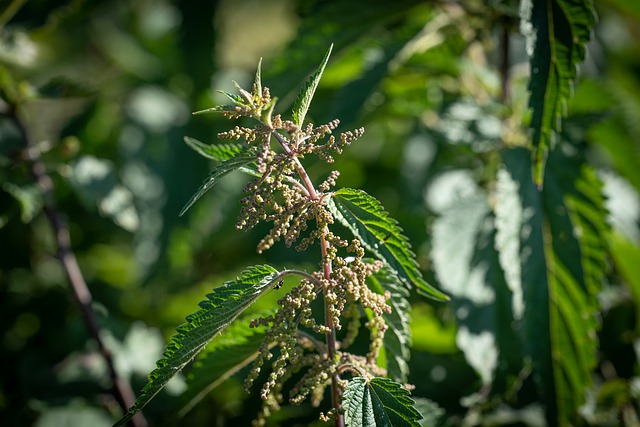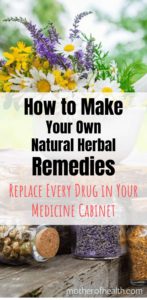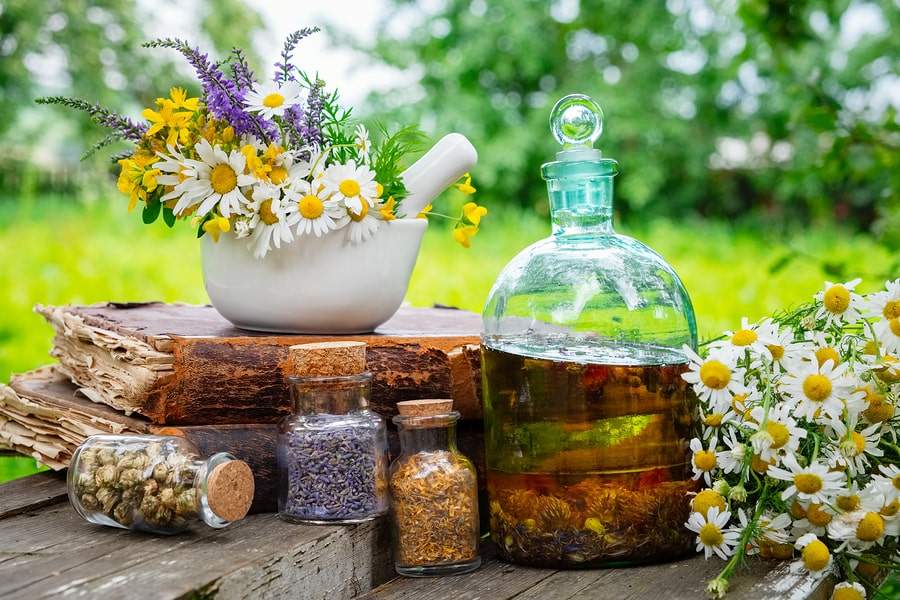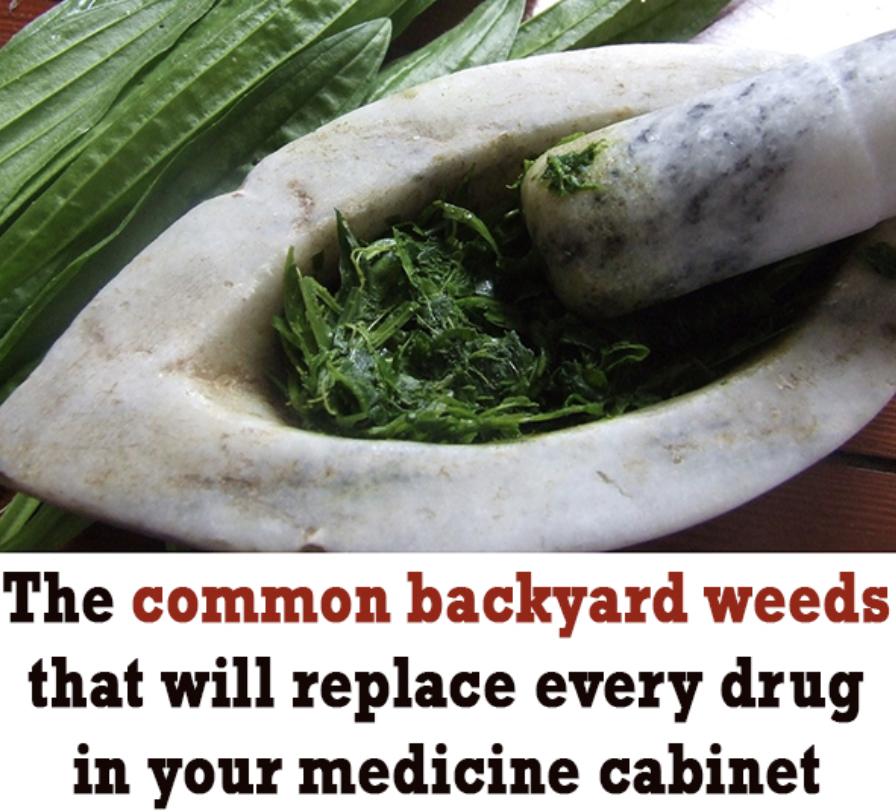There's nothing supernatural about the use of herbs, spices, fruits, and vegetables in natural medicine. For thousands of years, natural herbal remedies were all we had to treat a variety of conditions and illness.
Here we look at the benefits of using natural herbal remedies, what types of symptoms natural medicine treats, growing plants and herbs that heal, and making your own herbal recipes.
Over the last 100 years, we have lost our connection nature. As a society, we've been dubbed the “pill nation” so there's no question we need to change our ways.
The internet has opened the door to many people discovering more natural options. It seems like more people are recognizing the value of botanical medicine and are interested in herbs that heal.
Traditional herbal remedies can be just as effective as prescription or OTC Western medicine. This shouldn't be surprising since most of our medicines originated in nature, not in a lab.
What Types of Symptoms Does Natural Medicine Treat?
Of course, if you have a major illness, it's wise to see your doctor and use modern medicine if recommended. But everyday symptoms like the following can be efficiently treated with natural herbal remedies.
- Heartburn
- Blood pressure
- Skin allergies
- Nausea
- Swimmer’s ear
- Leg cramps
- Constipation
- Common cold
- Eczema
- Hemorrhoids
- Indigestion
- Low blood sugar
- Sore throat
-
Colds, flu, nasal and chest congestion
-
Headaches and migraines
-
Mood disorders
-
Skin issues
-
Sleep disorders
-
Weight loss
-
Arthritis and pain relief
What are the Benefits of Using Natural Herbal Remedies?

Clean and Natural
Natural remedies are those made with things found in Mother Nature, such as herbs, leaves, and spices. When delving into the world of natural medicine, you’ll find that much of what we need is already here for us.
When you make your own natural remedies, you can ensure that your plants are pure. If you are going to use plants for medicine, you want them to be clean, natural and organic.
Cost-Effective
More families are looking for ways to save money, and using natural remedies can help. As you probably already know, medications are costly.
They are expensive because drug manufacturers must process, advertise, and market their products. This goes for over-the-counter medicines as well.
If you’ve ever had a cold in the family, you know how much it costs to fill your cart with cough drops, cough syrup, pain reliever, and decongestants. Natural remedies are much cheaper, and because the ingredients are natural, they are less expensive to produce. You can grow many plants to use in natural medicine, reducing the cost that much more.
As you grow more familiar with using natural ingredients to treat everyday symptoms, you’ll know exactly which herbs to grow and how to store them for later use.
Fewer Side Effects
When you get home from the pharmacy with your prescription and read the insert pamphlet, you can see the laundry list of side effects that come with even the simplest medications. Some of the most common side effects include drowsiness, diarrhea, and upset stomach.
Natural remedies have far less side effect. You can treat the source of the problem without causing extra complications. Also, natural remedies are milder in their makeup and do not contain the harsh ingredients that OTC medications do.
Equipped and Self-Reliant
Survival medicines could save your life if for any reason pharmaceuticals are not and will not be available. Natural herbal remedies can help you be more prepared and should be a part of your emergency medical supplies. Even something as simple as a scratch could turn into a swollen, mess of puss if an antibiotic was not available for whatever reason.
Garden Joy
Cultivating medicinal plants is an important and enjoyable task that can bring you immense joy. A garden is a place of pure positivity and positive energy. Spending time in nature is relaxing, and healthy even if you live in an urban environment.
Turning Your Backyard Into Powerful Healing Plants
Growing a medicine garden and making natural herbal remedies is a beautiful addition to a healing lifestyle. Over time, you can grow your very own medicine cabinet stocked with healthy, all-natural solutions for treating common ailments.
You’ll feel great that you’re giving your family healthy alternatives that Mother Nature has provided us with. The more exceptional picture, however, is that you will teach your family that they don’t have to reach for OTC medicine every time they have a symptom. This mentality can have huge rewards over time as your family becomes less dependent on modern medicine, leaving it to treat major illnesses only.
People have been using natural herbal remedies for more than 5,000 years with great success. A growing body of research has shown that some herbs can be just as effective as modern pharmaceuticals, and often pose fewer risks or side effects.
What Plants and Herbs Should you Grow?
There are endless herbs and spices that you can grow for medicinal purposes. You may want to choose plants based on you or your families health issues. Or maybe you want to grow medicinal herbs as a business, or for a product line of herbal remedies… What you grow will depend on how you wish to use your medicinal herbs. Whatever you choose, begin with plants you like and what you think you may use the most.
Here are a few of our favorites:
- Aloe vera
- Blackberry
- Basil
- Bergamot
- Cayenne
- Calendula
- Chamomile
- Dandelion
- Dill
- Elder
- Echinacea
- Fennel
- Ginger
- Gotu Kola
- Hawthorn
- Lavender
- Marshmallow
- Mugwort
- Peppermint
- St. John’s Wart
- Thyme
- Valerian
- Willow bark
- Yarrow
Why is it Important to Know Your Plant

Planting a medicine garden is a bit different than planting a vegetable garden. This is because you will be using the ingredients for a specific purpose.
You can grow zucchini and cook it in a variety of ways, but you must store and use medicinal herbs in specific ways for them to have medicinal value.
To begin with, know what you’re planting and what parts of the plant you will be using. Some parts of the plant may be safe while others are off-limits. You also want to know which plants can be used externally and internally.
Some plants, like foxglove, can be fatal if you ingest them, yet beneficial when used externally. The dosage is also something to be familiar with since you can’t just take an unspecified amount of a natural remedy.
You will also want to know the weights of everyone in your family and how much of the remedy they will need to be relieved of their symptoms.
Finally, know what you’re about to plant in your medicine garden. There are many varieties of plants that look the same, yet one could be safe and the other toxic.
For instance, fennel is used as a medicinal herb and is closely related to dill, parsley, and celery. However, water hemlock and poison hemlock look very similar but are deadly. Even if you’re careful about what you’re planting, make sure your family knows as well.
How To Prepare the Soil for Growing Herbs
Container Gardening
Making Your Own Herbal Recipes

The decision of which type of remedy you will make depends on the person who is taking the preparation, the condition the person has and the plant.
It’s important to note that when working with medicinal herbs, many recipes will start with a particular base, such as an infusion, maceration, decoction, or tincture.
Infusions
Infusions are essentially medicinal strength herbal teas made by infusing certain parts of the plant in hot water. They are prepared from leaves, stems, and flowers by covering them with boiling water and allowing them to steep. Infusions are good for many types of herbs.
To prepare, measure one teaspoon of dried or 2 teaspoons of fresh herb per cup of water. Bring the water to boil, then pour the water over the herbs. Cover with a lid and allow the herbs to steep for 10-15 mins. Strain out the herbs.
Decoctions
Decoctions use tougher plant materials like berries, seeds, and bark and are usually simmered in water.
A general measurement is one teaspoon of dried or two teaspoons of fresh herb per cup of water. Add the herbs to cold water in a pot. Place on stove and bring to a gentle boil. Cover and simmer for 30 minutes.
Most herbal infusions and decoctions will last up to 4 days in a tightly closed glass container in the refrigerator. You can drink them at room temperature, warm or cold. You should never microwave a healing tea because they emit radiation.
Tinctures
Tinctures are made by a process called maceration. You can use this method to prepare both alcohol and vinegar tinctures.
To make a tincture, start with a clean 1-pint glass jar. Add 1 Cup of chopped fresh herbs or 1/4 Cup of dried herbs. Add 1 pint of 75-80 proof vodka or brandy.
Place herbs in a jar and pour the alcohol over the top of the plant material until it covers the herbs. Put the lid on and date it. Shake it well every few days. Store at room temperature for 4-6 weeks. After strain herbs with a clean cotton cloth and squeeze until all the liquid has been removed from plant material. (You can add the squeezed herb material to your compost pile.)
Elixirs and Syrups
Elixirs and syrups are a wonderful way to use herbal medicines. They are great to use with children because they taste good. Syrups are used for soothing sore throats, coughs, and other respiratory ailments.
Place 3/4 – 1 cup of the cleaned herb in a pot. Add approximately 2 cups of water or enough to cover leaves. Bring it to a boil and let simmer on low for about 20 minutes partially covered till reduced in half. Strain of plant material.
Add 1/2 cup of honey to infused water. (Use 2 parts infused water to 1 part honey.) Pour in glass jar. Let cool before putting a lid. Store in ref refrigerator for up to four weeks.
Infused Oils and Ointments
Many types of skin conditions and wounds will benefit greatly and speed up healing times by using infused oils and ointments. Calendula flowers make beautiful skin oil. Herbs from the mint family can be rubbed into sore muscles, relieving muscle tension and fatigue.
Begin by adding herbs to saucepan. Pour olive or avocado oil to cover herbs and simmer gently for 3-4 hours on low heat. Strain and press herbal mixture. You now have an infused oil.
To make an ointment from your infused oil add approximately 7 ounces of infused oil to 2 ounces of beeswax in a pot. Simmer on low till beeswax melts. Label and store in a jar.



